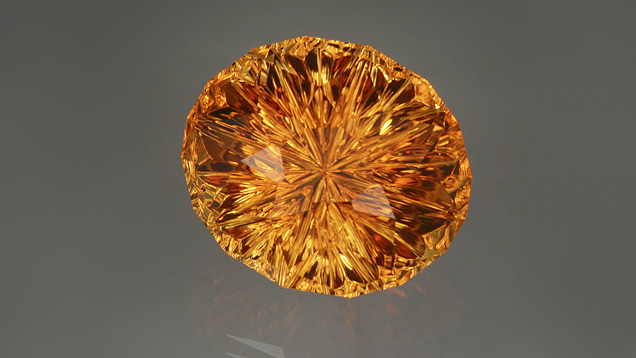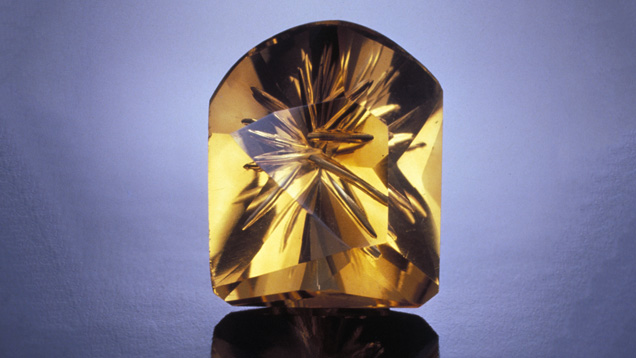Citrine Description

These gems, ranging from orangy yellow to reddish orange, are examples of fine citrine color. - Courtesy C. Y. Sheng
Since natural citrine is rare, most of the citrine on the market is the result of heat treatment, which causes some amethyst to change color from undesirable pale violet to an attractive yellow. The amethyst’s original hue can determine the richness of the resulting citrine’s yellow color.
Low-temperature heat treatment transformed an amethyst into this orangy citrine. A gem carver created the attractive fantasy cut. - GIA & Tino Hammid
Citrine crystals occur in a wide range of sizes, and citrine sizes up to 20 carats are readily available in jewelry. Although citrine is available in standard shapes and sizes, many high-end jewelry designers and gem carvers have fashioned the warm yellow gem into unusual cuts for jewelry and carvings.
This citrine carving weighs 167.78 carats. - Courtesy ICA



